Technology Observatory March 24-30
This week in Technology Observatory,
Microsoft is finally set to purchase Nokia for $7.2 billion in April
Google joins forces with Luxottica group (Ray-ban, Oakley) on its Google Glass project
Everything you need to know about the new Android HTC, HTC One (M8)
Nokia convenes the media for an official event on April 2 in San Francisco
- Sony is to continue its smartwatch platform, spurning Android Wear for the time being
- Facebook buys Oculus for $200 million
- Vodafone's 4G is set to cover all provincial capitals, Ceuta and Melilla in April
- Amazon sets a date for its streamer: April 2
- Microsoft unveils Office for iPad
- Facebook hopes to provide global Internet access using drones
When Microsoft announced that it was to buy Nokia back in September 2013, the Redmond company expected the acquisition to be completed in the first quarter of 2014. But these things take time, and M&A operations between big companies are always subject to extra scrutiny from market regulators. Microsoft now expects the deal to be closed in April. Why is it taking so long for the acquisition to be approved? The delay is due to anti-trust bodies in Asia that have yet to greenlight the operation.
"We are close to the final stages of the global regulatory process. So far we have been granted approval from regulators governing fifteen markets across five continents. We are now awaiting approval from the last few markets"
This statement is how Microsoft explains the current status of the purchase. Meanwhile, Nokia denies that the process has been hampered by a tax investigation, with the Finnish firm calling tax allegations made by the Indian state of Tamil Nadu "absurd". According to Indian officials, Nokia owes 414 million in tax duties. It is hoped that the agreement won't be delayed further and will be closed over the next few weeks. Google faced similar issues when it bought Motorola: these operations take a long time to be fully investigated, and no doubt Google's plans to sell Motorola to Lenovo will also be probed by regulators.
Google Glass is about to take a stylish step closer to consumers. Google has joined forces with Luxottica group, a global leader in the design, manufacture and distribution of prescription glasses and mid-to-high end sunglasses, as well as the owner of major brands such as Ray-Ban, Oakley, Vogue-Eyewear, Persol, Oliver Peoples, Alain Mikli and Arnette. Google hopes that teaming up with Luxottica will make Google Glass that much more attractive, thanks to the latter's long experience designing and manufacturing glasses. Luxottica is set to manufacture, distribute and sell the final version of Google Glass via its extensive retail and wholesale distribution networks. In January Google launched more than 40 new styles for Google Glass Explorer, including the first frames for prescription glasses, but the company wants as many designs as possible for customers to choose from.
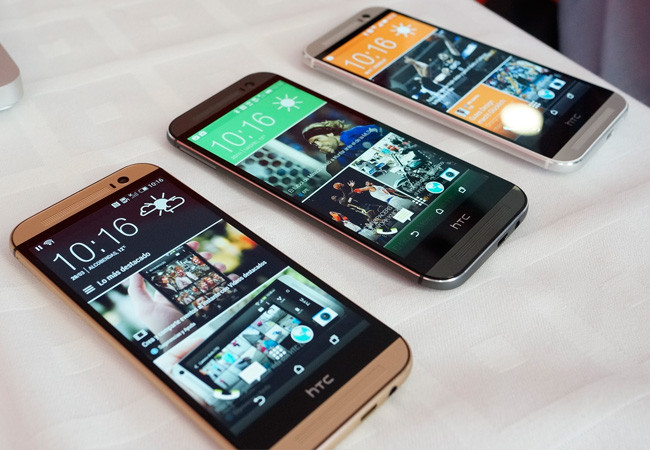
The new HTC One (M8) may be one of the most hotly anticipated and well leaked cell phone launches in history. All the big information had already been leaked, but that hasn't undermined interest in one of the hottest devices around, which was finally officially unveiled today. The new phone succeeds the HTC One original, which was also tremendously popular but did not sell as well as might have been expected. The new HTC One (M8) is a benchmark for what we expect from the high end of the market this year: it offers only a slight increase in power and few obvious novelties, but the camera and software make all the difference. Let's see what the Taiwanese company has to offer in its new flagship device. Inside is a 2.3 GHz quad core Qualcomm Snapdragon 801 processor. This is slightly more powerful than last year's best mobile chip. Next to that is 2GB of RAM, which should be plenty to provide a solid performance. The phone comes with 16 or 32 GB of internal storage plus microSD expansion. It also comes with 65 GB free on Google Drive. Last year's design has only been slightly updated. The all-aluminum body has finer lines, with third generation Gorilla Glass protecting the screen from scratches. The phone has stereo speakers, again at the front, with a return from HTC Boomsound and Beats Audio technology. The front features a 5 inch screen with FullHD and panel SuperLCD 3 resolution. Keeping the device running is a 2,600 mAh battery, 300 more than last year's model. The first phone offered good battery life, so we can expect the same autonomy from this phone. The camera is one of the more interesting aspects of the new HTC One M8. It has a dual rear camera, the main one being 4 ultrapixels, while the second 2 megapixel camera provides added detail and definition. The front has a wide-angle 5 megapixel camera, which is perfect for selfies. As for software, the phone again comes with HTC Sense: an interface that improved significantly last year with the introduction of BlinkFeed. The company has kept faith with the software, rendering it a little more simple in line with Android 4.4, which the phone will run as standard. Proprietary applications will again feature prominently on the new HTC one (M8), including a photo gallery, use of the device as a remote control via the infrared port and other new features, such as image editing. HTC does not want a repeat of last year, and will avoid delaying the launch of its flagship device. The phone will be on sale soon alongside its competitors in the high-end market. Prices for the 32 GB version will start at 729 euro. The Taiwanese company seems keen for the device to hit the stores before other top-end phones such as the Samsung Galaxy S5 and the Sony Xperia Z2. The new HTC One will be on sale in countries such as the United States and United Kingdom as of today. In Spain it will be launched in mid-April.
As well as all the secrets of the HTC One (M8), other interesting details were revealed. For example, there will soon be a HTC One (M8) running pure Android. While there was always a good chance that the Taiwanese manufacturer would repeat its HTC One strategy, it was never a sure thing. Confirmation came via the applications that HTC has been releasing on Google Play and that are no longer an integral part of HTC Sense 6. And not only that: there will also be a version for developers. To date the HTC interface featured a set of native applications that were not available separately, but this is no longer true with HTC Sense 6: the company has gradually released some of its new personalized tools via Google Play. These include HTC Gallery, the new photo manager application for HTC One (M8), which other users will now be able to download too. The description of this software explicitly mentions an edition of the smartphone that will run pure Android:
"HTC Gallery offers a wide array of simple and fast ways to find your photos. With Image Match, you can simply choose a photo with the object or person that you wish to find and the software will bring up similar photos. Timeline View sorts your photos by day, month or year. And POI Location searches for photos that have been taken in a specific place. This makes finding the photo you are looking for simple and fast. Support for HTC One (M8) Google Play Edition is limited to HTC Photo Edit."
The name indicates the imminent arrival of an HTC One (M8) version that will run pure Android (also known as the Google Play Edition), without the HTC interface. This model will be sold at 699 dollars. As reported on Android Community, the HTC One (M8) developer edition is also available via the U.S. Google Play store, where it is selling for 649 dollars, the same price as the consumer version.
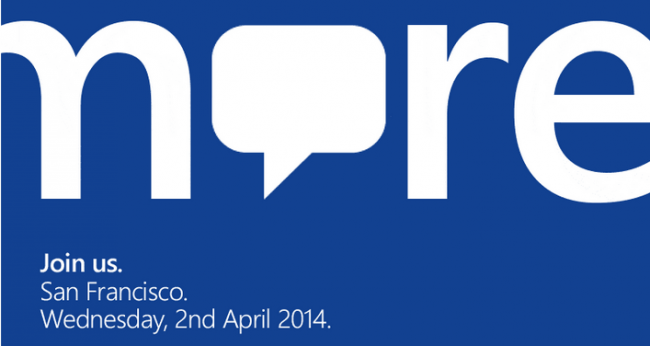
While HTC has dominated the headlines with its new HTC One M8, Nokia has tried to steal some of the limelight by calling a press event on April 2 in San Francisco. Why? Nokia has hoped to keep the media guessing. “Join us for… more”, says the invitation, which features the hashtag #moreLumia. The clue indicates that Nokia will be unveiling new devices running Windows Phone. Will we see the Nokia Lumia 630, codename “MoneyPenny”, which has been much discussed in recent days? Perhaps the Lumia 930, codename “Martini”, will also be on show in a joint unveiling. With the company saying nothing officially, for now we can only speculate. The date of the press call is no coincidence. The Microsoft Build event is also scheduled for April 2. It looks like Microsoft will unveil its Windows Phone 8.1 in the morning, while in the afternoon Nokia will introduce the first devices carrying the new operating system.
The Android Wear operating system, recently introduced by Google for smart watches and wearable devices, looks likely to be adopted by plenty of manufacturers, but Sony will not be among them. Ravi Nookala, head of the Sony Mobile division in the United States, has confirmed that the Japanese company will retain its current smart watch platform and will not be using Android Wear. In an interview granted to CNET, Nookala said “We've already invested time and resources on this platform, and we will continue in that direction“, which seems to rule out Sony adopting the new Google platform in the near future. The Sony smart watch was one of the first to emerge on the market. Now it will not only go toe-to-toe against other "first generation" watches, such as Pebble and Galaxy Gear, but it will also face competition from a promising batch of devices running Android Wear, spearheaded by the Moto 360.
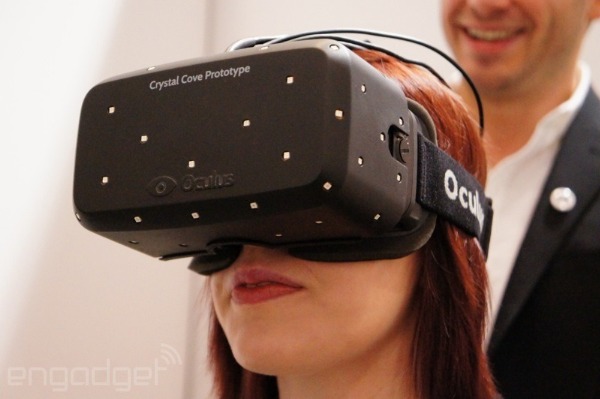
Facebook apparently still has plenty of cash and stock to burn. Just a few moments ago it announced its latest acquisition: Oculus. The company makes one of the most promising virtual reality headsets around, the Oculus Rift, and is now part of Zuckerberg's growing empire. Following the acquisition of WhatsApp, which rivaled that of Instagram in terms of grabbing headlines, Facebook announced that it would buy Oculus, looking to boost its system as a gaming platform and to capitalize on potential new social experiences. Facebook paid $2 billion for Oculus, $400 million in cash and the rest in stock. Facebook used a similar approach when buying the instant messaging platform WhatsApp. The move represents an important financial step forward for Oculus; after Sony announced it would make a virtual headset for PlayStation, called Morpheus, Oculus has come under pressure to bring a product to market before the Japanese conglomerate. Not surprisingly, both companies spoke highly of each other in the official press releases. We hope that the move does not affect Oculus' original plans to create the immersive videogame experience that many of us have been craving for years. The press release talks of new social experiences, all of which sounds a bit like castles in the air, but Facebook will certainly be looking to capitalize on all the potential of its new purchase. Will we use virtual reality to experience social networks in future? Only time will tell. For now the possibility still sounds more like the realm of science fiction.
Carriers with proprietary networks are racing to launch the biggest and best 4G network in Spain, although there has still been no news on when the 800 MHz band will be freed up. And despite Vodafone saying at one point that it would wait for the digital dividend before truly driving expansion of 4G coverage, today's announcement suggests quite the opposite. The British company announced that as of April 1 its 4G network will reach all provincial capitals plus the enclaves of Ceuta and Melilla, while coverage in regularly crowded spots will also be boosted, including stadiums, airports and stations. 4G is expanding rapidly across Spain. Just a year ago the companies were running test deployments. Now they are rolling out coverage to the country's biggest towns and cities. Vodafone, for example, said that by next Tuesday it will not only have covered all provincial capitals but also a further 220 towns that have more than 70,000 inhabitants. As well as reaching all the major populations, coverage will also expand rapidly outside cities. Vodafone has also boosted its coverage in critical spaces, such as airports, train stations, stadiums, anywhere that attracts crowds and the Montmelo motor racing circuit. By ramping up its 4G deployment efforts, Vodafone has caught up with Yoigo's market leading network. This carrier, the youngest operator with a proprietary network in Spain, already offers 4G coverage to all provincial capitals, Melilla and towns of over 70,000 inhabitants, and has the advantage of not needing to wait for Spain's digital dividend, as it doesn't have any 800 MHz band licenses.
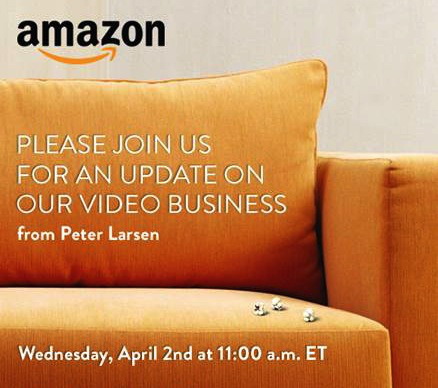
Amazon maybe readying new hardware for launch, and it won't be a Kindle device. The press invitation indicates that on April 2 the retailing giant will be announcing big news on... sofas and popcorn. Actually they will be discussing their video entertainment division, and the picture offers a good idea of what will be on the agenda. However, the question is what kind of device they intend to launch. There have been rumors of the firm releasing a dongle, much like the Chromecast, as well as a video game console with a wireless controller. Looking at the market, we would expect Amazon to launch an affordable dongle that would challenge the excellent Google product. Perhaps closer to the E3 event it might launch a console that also supports video services. We will have to wait until April 2 to find out for sure.
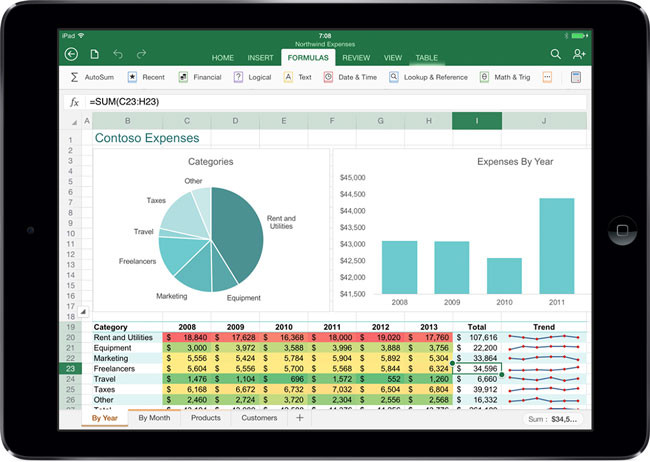
Finally, recent rumors were confirmed when Microsoft introduced Office for iPad. For the time being the version will only be available for iOS and more specifically for the Apple tablets announced on the App Store over the course of the day. A near complete Office suite will be released, featuring Word, Excel and PowerPoint. Microsoft has integrated the suite with OneDrive, meaning users have easy access to files and can of course save changes directly via the 'cloud', and files can be opened from any other device. The OneDrive system also allows users to create shared documents that can be edited by several users simultaneously. This feature was introduced by Google with its Drive service some years ago and will now be supported by Office for iPad, as well as other platforms we would imagine. No official prices have been revealed, but there were reports that Office for iPad will be free of charge for Office 365 subscribers, while others, who can still install Office for iPad free of charge, will only be able to access documents sent to them or that they have saved; editing permissions will only be held by Office 365 subscribers. There will also be free apps to view Office-created documents on different platforms, and even, so we are told, to make presentations using the same.
And there has been more news on the launch of Microsoft Office for iPad: the version of Office for mobiles will be available free of charge via iTunes and Google Play.
The software will be free for personal use, while businesses will need an active Office 365 subscription. Users can create and edit documents on any device (except iPad, for which users will need an Office 365 subscription even for domestic use, as we have seen) and save them on OneDrive, which is set to become more prominent thanks to Microsoft's new strategy. By offering the famous Office suite free of charge, Microsoft is sure to attract thousands of users the world over, who will also start using OneDrive to save their documents. This is bound to hurt the currently more widely used Google Drive and DropBox. Nonetheless, Microsoft will face a head-on challenge from the Google office platform, a set of tools that has always been free of charge and that has grown rapidly in recent years, both in terms of features and users.
Facebook has announced a new and interesting partnership with Internet.org, pursuing an ambitious project using a wide array of innovative aeronautic and telecommunications technologies for a single and magnificent purpose: to provide global Internet access. The project is called Connectivity Lab and the plan is to use solar energy powered drones to provide Internet connection to each and every corner of the planet. Facebook's idea may sound like science fiction, but it's actually quite simple. Satellites orbit too far from the planet's surface to sustain a strong and constant connection, compared to a traditional broadband link. Facebook wants to bring the signal closer by using devices that will still be airborne but much closer to Earth than satellites. And the solution is? Drones. Small unmanned aircraft that can remain in flight at an altitude of 20 thousand meters, higher than commercial airspace, and could stay for "months" in the air powered by solar energy, flying at an optimal distance for relaying a strong signal. Some weeks ago rumors were rife that Facebook wanted to buy a drone company. This now makes much more sense. The company, in partnership with the excellent Internet.org (a joint initiative from Facebook, Ericsson, Nokia, Qualcomm, Samsung and others), is seeking to provide global internet access, including to emerging markets and remote regions, by means of innovative technology.
I for one find it amazing that so many companies and organizations have joined together with the goal of harnessing technology to provide mass connectivity.
